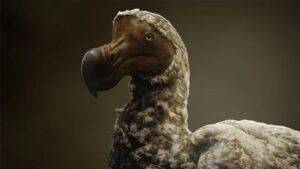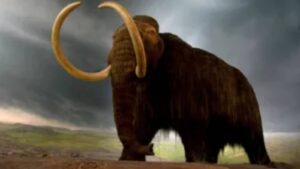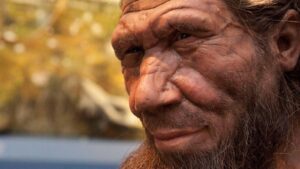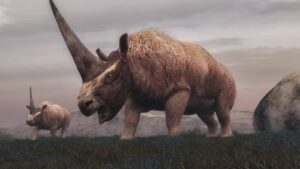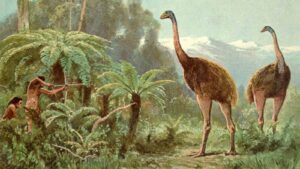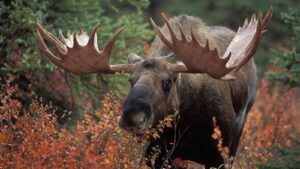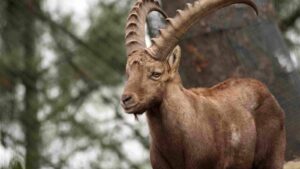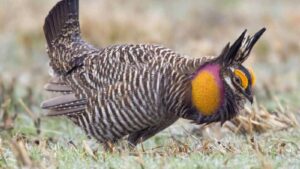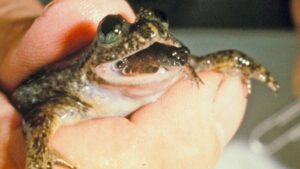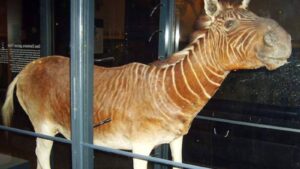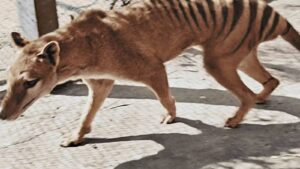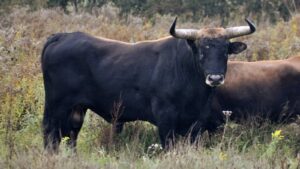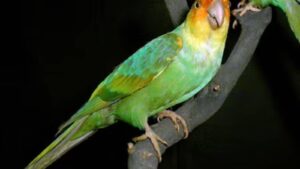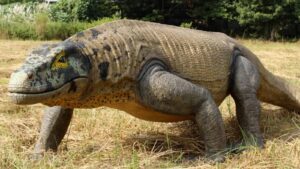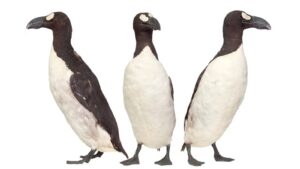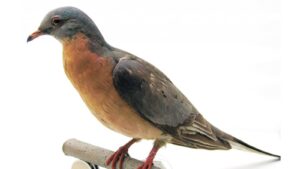Extinct animals scientists are ready to bring back
Summary
Top 20 extinct animals scientists are ready to bring back. Due to the dramatic shift in climate and other human interventions, there are a lot more plant and animal species that are extinct than those that are alive today. This […]

Top 20 extinct animals scientists are ready to bring back. Due to the dramatic shift in climate and other human interventions, there are a lot more plant and animal species that are extinct than those that are alive today. This is actually a shame, especially to the scientist’s community, who should have given it all to study these creatures. However, due to advances in genetics and cloning, bringing these animals back from extinction seems more of a possibility than ever. Let’s look at some of the top 20 animals scientists are ready to bring back.
Video: Extinct animals scientists are ready to bring back
The dodo
30 years after its discovery, the dodo became extinct. It’s only known habitat was Mauritius Island, where it had been living peacefully, who knows for how long, until in the 1590s when their death showed up. The dodo had no fear of people because it had not seen humans before, so it was easy to club this creature to death. These birds were big and heavy, a little over 3 feet tall and weighing about 39 pounds. Luckily the dodo may soon become un-extinct, as scientists just need to collect a few DNA samples and implant them into their closest relative, the pigeon.
The ground sloth
You might mistake this picture of a gigantic creature for a bear. Well, yes, it is, to be more precise, a ground sloth. These are some of the extinct animals that scientists are ready to bring back since they were still walking about 8,000 years ago. Even better, some DNA samples have already been received from their undamaged cells. However, finding a surrogate mother for the clone baby may be difficult because their nearest modern-day relative is too small to carry a creature the size of a bear. Scientists are therefore contemplating the possibility of using an artificial womb.
Video: Extinct animals scientists are ready to bring back
The woolly mammoth
Even though most of the woolly mammoths died out about 10,000 years ago, a population of about 500 to 1,000 of them was still living on Wrangel Island up to 4,000 years ago. This animal was about the size of an African elephant, with a shoulder height of 11 feet, and weighed about 6 tons. They had a thick, double-coated fur and fluffy ears that helped it survive harsh conditions. Many discovered specimens frozen in the Arctic make it possible for scientists to use their DNA and create a hybrid embryo of a woolly mammoth and an elephant that has already been nicknamed mammophant.
The Neanderthal
This is definitely the most controversial. The idea of scientists bringing back to life this species has brought about a heated debate due to the logistics. The closest surrogate species would have to be human, and in addition, Neanderthals are believed to be a subspecies of modern people, so while cloning them would be enlightening, it could also be unethical. In any case, resurrecting Neanderthals would be the easiest of them all because scientists already have its genus, and it’s not a question of whether or not we can, but if we should.
The Siberian unicorn
There you go; that’s what a real unicorn looks like, and it was more like a rhino than a gracious horse. The Siberian unicorn discovered in Kazakhstan showed that it had just disappeared 29,000 years ago, unlike scientists had earlier thought, and that’s great for people who wish to see a unicorn someday, because it was technically a unicorn and not some magical fairy tale type. With one big horn coming out of its skull, it was 15 feet long, 6 feet tall, with a whopping 9,000 pounds in weight! Hmm… there you go, Fox.
The woolly rhinoceros
Alongside the woolly mammoth is the woolly rhinoceros, a fluffy extinct animal that scientists want to bring back. This animal recently lived in the arctic snows about 10,000 years ago. This furry rhino is quite famous and often makes an appearance in the French Chauvet-Pont d’Arc cave. The Arctic permafrost has done a great job by preserving quite a lot of specimens, and now the woolly rhinoceros has the same chances of being resurrected as a mammoth.
The saber-toothed tiger
Just about the size of your modern-day big cat, this extinct animal being brought back by scientists could get up to 13 feet long and weighed from 200 to 600 pounds. It had a muscular neck, powerful front legs, and sharp teeth protruding from the upper jaw. Just looking at those teeth, I am sure you’re thinking this is an extinct animal we shouldn’t bring back to life! These prehistoric predators disappeared just 11,000 years ago, and because their original habitat was pretty cool, their fossils have remained intact, just like a mammal.
The baiji river dolphin
This beloved creature went extinct in 2006 as a result of direct impact due to human activity. This is one of the animals that scientists are ready to bring back from extinction. Because of their recent extinction, their DNAs are pretty much at hand, and their resurrection is a guaranteed success. Unfortunately, it’s unclear whether the baiji river dolphin will have a home to come back to if it doesn’t become un-extinct because their habitats are extremely polluted.
The moa
This was a huge, flightless bird similar to an ostrich. The moa family has about 10 members, some not bigger than turkeys, while some reached a height of 10 feet, making it the largest bird that has ever inhabited the planet. Just six hundred years ago, the history of this bird was brought to an end by aggressive hunting. Lucky enough, due to such a recent time of this animal’s extinction, remnants of their feathers and eggs can still be found even today, and the moa DNA has actually been extracted from the moa eggshells.
The Irish elk
Also known as the giant deer, the Irish elk is one of the animals that didn’t manage to survive the ice age. Despite its extinction about 12,000 years ago, researchers have discovered Irish elk fossils that are only 7000-8000 years old in Siberia. If this is one of the extinct animals scientists want to bring back, well, it will be a great sight to see. It was 7 feet tall just at its shoulder, and it had antlers extending up to 12 feet across. The Irish elk inhabited the north, and its preserved remains have been found in the melting permafrost.
Read More: Top 20 kids with real superpowers
Pyrenean ibex
This is a subspecies of a Spanish ibex that went extinct for the last 20 years. They were hunted for meat for over 200 years until their exhaustion in the year 2000. But can scientists bring back extinct animals? Yes, this species was brought back from extinction in 2006, though it went back again in just a few minutes due to a deformed respiratory system. This event marked the first successful attempted de-extinction by way of cloning. Despite that, scientists still believe that with viable genetic material, they will still bring back this animal from extinction.
The heath hen
In regards to the conservation, the heath hen is one of the animals that received a lot of concentration from people. Commonly found in the northeastern US, these birds were aggressively hunted for food for the next 300 years or so. Local conservationists banned the hunting of this bird to try and preserve it, but it still went into extinction in 1932. The availability of its DNA makes it a candidate for de-extinction. However, a conservation group is determined to restore the bird through genetic technology.
The gastric brooding frog
Native to eastern Australia, the gastric brooding frog is an aquatic frog whose genus consists of only two species, both of which went extinct in the 1980s due to chytrid fungus. They are famously known for their unique characteristic of giving birth through their mouth. After their extinction, much later in 2013, scientists began a project dubbed the Lazarus Project, named after a biblical man meaning bring back to life. They tried to clone the frog, and they hope to make an embryo that would survive up to a tadpole stage.
The quagga
This animal that went extinct in 1983 due to hunting is actually a subspecies of the plain zebra. The two species had the same DNA and shared the same genotype, though their observable characteristics are different. Scientists started a project to recreate the quagga from selected plain zebras. It had some success, and the first quagga plain zebra was born in January 2005, while the fifth generation was born in December 2013. This extinct animal scientists are bringing back is almost identical to the extinct quagga and can be released into the wild.
The thylacine
This largest known carnivorous marsupial, native to Australia and New Guinea, looked more like a wolf. It became extinct on the mainland 3000 years ago but survived on a Tasmanian island until human hunters brought it to extinction in attempts to protect their lives in the early 20th century. In 2008, scientists at the University of Melbourne grew a mass of embryos from a sample of DNA, and they grew normally. This experiment has given scientists the hope of eventually restoring the thylacine from extinction.
The Auroch
This is an extinct mammal considered to be an ancestor of all modern cattle, domesticated by the settlers of India and Eurasia about ten thousand years ago. Unfortunately, this historic animal species was declared extinct in the 17th century when the last Auroch died of a disease. Scientists are planning to resurrect the species by backbreeding the primitive breeds of European cattle until they get animals similar to the auroch. Even though the new auroch won’t be identical to the extinct one, scientists believe that the differences will be very few.
The Carolina parakeet
Native to North America, the Carolina parakeet was exterminated by hunters, rendering the species extinct in 1939. Poachers hunted this bird for its incredibly beautiful feathers, which were used in the production of expensive ladies hats. Nevertheless, scientists have extracted their DNA from eggshells and are working on reviving this wonderful bird. Even though scientists have good intentions, it’s believed that after the revival of these parrots, the extinction story may repeat itself again.
The megalania
The megafauna were part of the megafaunal assemblage that inhabited southern Australia during the Pleistocene. They had a massive 575 kilograms and measured 5.5 meters in height. It is believed that the earliest Australian aborigine settlers might have been a factor in the extinction of this gigantic lizard. There is a larger initiative, though, aimed at retrieving the long-gone megalania and putting it on the list of some of the extinct animals being brought back to life.
The great auk
This flightless bird became extinct in the mid-19th century. It was the only modern species in the genus Pinguinus. Even though there is no relationship between the two, this was the first bird to be called a penguin. The birds down feathers were in high demand in Europe, where they were used in making pillows. Its eggs and flesh were also used for food. This largely contributed to its extinction through hunting. However, scientists are working on cloning this precious bird back by use of the DNA from its preserved parts.
Read More: Unusual and Unique Bike You’ve NEVER Seen Before :Part 2
The passenger pigeon
Before their population dwindled, the passenger pigeon was estimated to be as much as billions. It was native to America, and due to their migratory habits, where they moved in large flocks, it was easier for people to shoot them down in large numbers, consequently leading to their extinction. Scientists are working to bring it back using its closest relative, the band-tailed pigeon. The extinct pigeon is expected to be ready by 2024 and would be released to the world by 2030.
Which one of them do you want to see in real life? Do you think we should bring them back? Let us know in the comments box below.
